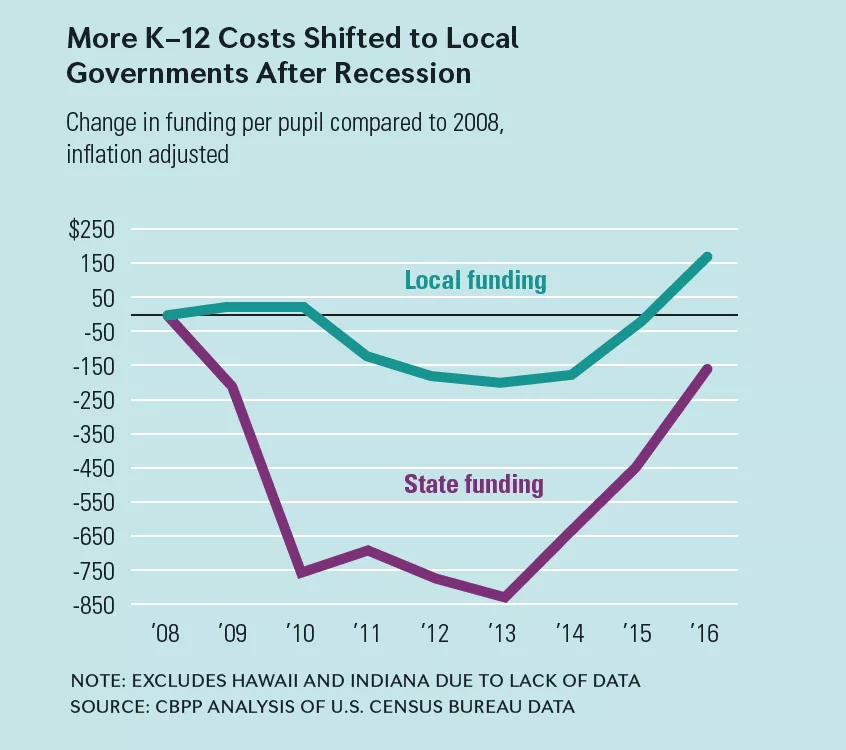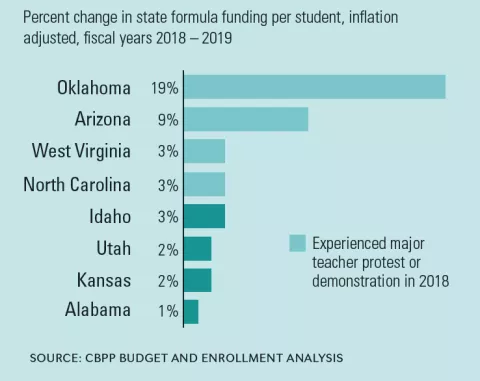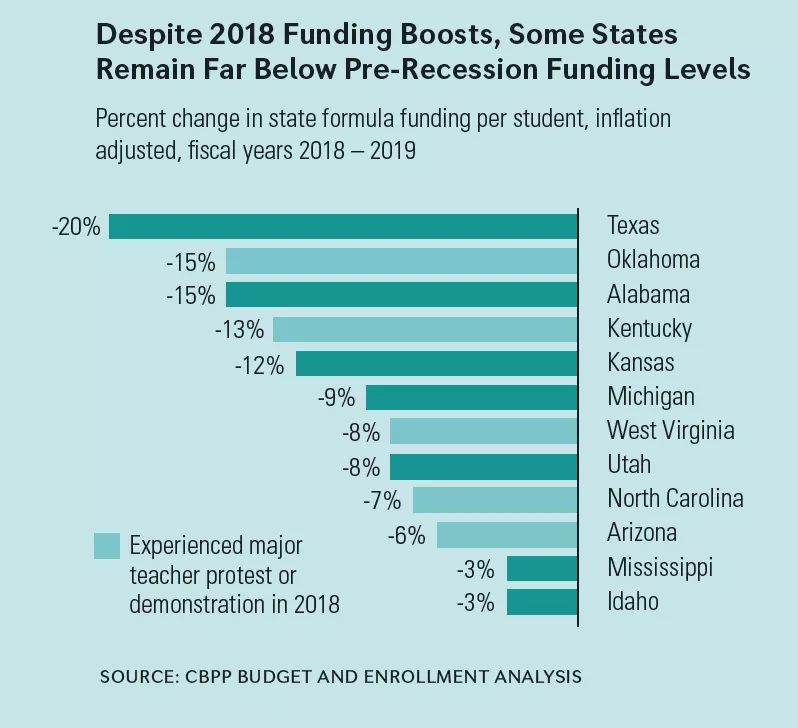Key Takeaways
- When state school funding decreases, inequity increases.
- Public schools have relied more heavily on local funding during the recession.
- Only the wealthiest areas can make up for low state funding by raising local revenue. That means students in poorer districts suffer the most when states reduce formula funding.
Although educator actions—strikes, walkouts, rallies, and lobby days—helped lead to substantial increases in K–12 funding in 2018, state investment in education is still well below what our students deserve. Oklahoma provides a clear example. After a nine-day educator walkout, state lawmakers increased education spending by $50 million. And yet, K–12 per pupil funding remains 15 percent lower than before the recession (when adjusted for inflation), leaving schools with an estimated $150 million of unmet needs. The state raised teacher salaries 13.2 percent, but Oklahoma still ranks low (34th) in the nation for average teacher pay.
The data tell a story of progress made and an urgent need for states to do more for public school funding and equity:
The Facts On State Funding
State Funding Plummeted During the Recession, and has yet to Fully Recover

Educator Protests Made a Big Difference in these States
Many States with Post Recession K-12 Funding Cuts Boosted Funding in 2018

But 12 States Remain Far Below Pre-Recession Funding Levels
Despite 2018 Funding Boosts, Some States Remain Far Below Pre-Recession Funding Levels

84% of K–12 public school parents would support teachers striking over school funding.
(Source: 2019 PDK Poll of the Public's Attitude Toward Public Schools)
Ready to add your voice?
Most state legislatures convene in the coming weeks to begin making critical decisions that affect public schools, including state budgets. Legislators need to hear directly from educators about how the lack of funding affects them and students. Here are a few tips for communicating with those who represent you.
DO
- Do share your personal stories about how education funding affects your classroom.
- Do talk about priorities.
- Privatization schemes drain money from public schools.
- Taxpayers should not be asked to support two separate systems of education.
DON'T
- Don’t repeat the opposition’s argument, and avoid using their misleading words. Call a voucher a voucher—not “choice,” a tax credit, or an education savings account.
- Don’t just say what doesn’t work—name solutions as well.


